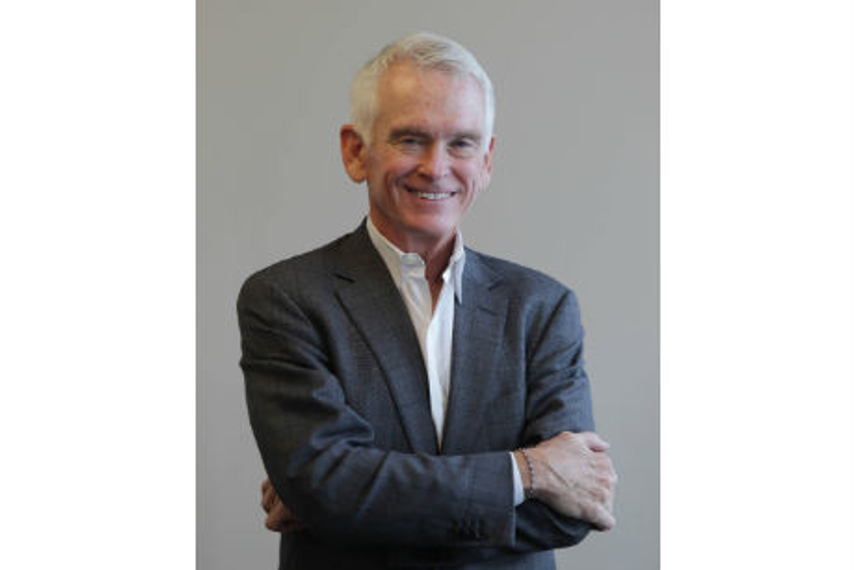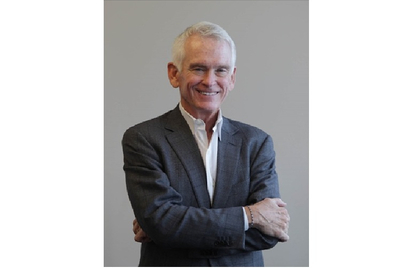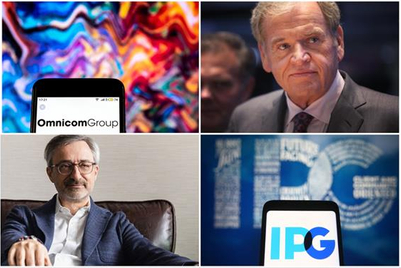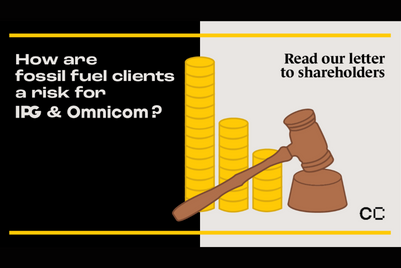
FCBUlka Group’s Cogito Consulting presented a seminar themed ‘New Realities’ for the marketing fraternity in Mumbai on 7 May 2014. Presenting findings from the 2014 wave of an eponymous study was Terry D Peigh, SVP and MD, Interpublic Group. The theme for the six-country online study was ‘How New Media is Impacting Consumer Decision Making’. Over 500 interviews each were conducted in India, China, Brazil, USA, Russia and Germany.
One of the findings is that Indian consumers are graduating from ‘Demand’ to ‘Demanding’, says the study. Some of the slides from his presentation on findings specific to India:
Campaign India caught up with Peigh a day prior to his talk, to discuss changes in consumer behaviour, changing roles of marketers, how brands can deal with point-of-sales (POS) switch and the growing importance of post-purchase engagement. Edited excerpts:
What is the level of trust in social media recommendations? Is there a level of maturity setting in, with respect to fabricated 'likes' and paid-for influencer opinions?
People are becoming wary as word is getting out that likes and followers can be bought. Which is why I think that the ‘likes’ and ‘followers’ count is becoming greatly devalued. It’s a fake metric and not a true measure of engagement. Naïve people may look at it as a measure but sophisticated marketers know better. Increasingly, consumers are realising that they need to fly higher than before because they’re learning that marketers are able to buy this kind of influence which makes people wary. The consumer ends up putting a finer screen between themselves and any kind of messaging. This encourages marketers and marketing companies to be as honest and direct and forthright and transparent as possible. You have to convince the people that you’re honest.
We’re never moving away from selling, but we’re moving towards selling something while creating a relationship that’s based on trust and honesty.
Consumers still rely on word-of-mouth from people they know, though the medium may have evolved to social networks. What is the role of brands using social networks to engage directly with consumers?
Everything feeds the knowledge of the ‘friends and family’ category. If I’m buying a camera and you’re my friend and I ask you for information about it, your knowledge about that brand would have been influenced by the communication that has been delivered to you. So as a brand, you’re still feeding information to people - the important thing now is to find new ways of delivering the right information to people so that they can propel it onto others. It is about finding the influencers, engaging with them and give them the relevant information in a manner which is interesting to them. You need to turn your influencers into the best sales force in town. We’re not in the business of making TV commercials, we’re here to help our clients sell their products. So finding the proper channel for communication, reaching the right people, is very important to us.
How does this factor in when dealing with brand loyalists (of a competing brand)?
In many ways, the growing importance of ‘friends and family’ is perhaps the one legitimate way to break that loyalty. Inputs from friends or family are trusted to a greater degree as compared to other sources of information. It’s a long tail but that is what marketing is all about. It’s not about shooting an ad and moving on to something else. There are a lot of influences on a consumer that we have to be cognizant about and address. This makes the job of marketers interesting as well as difficult and it’s more demanding on marketing service companies because we have to do a lot more things and think a lot deeper than before. The decision making has been made more complicated.
What seems to be the most challenging barrier to overcome when engaging with consumers digitally?
A lot of people have become quick to disregard messages. They’ve learned to shun messages online because often times they’re there for something else. For example, if people are online to watch a TV show and its gets interrupted by an ad, more often than not the people will just run away from it. With online, it’s about getting people’s attention and holding it together. A lot of websites just assault you with junk ads making it seem like one is going through a copy of the Yellow Pages. With those many ads on a page, you end up seeing nothing. A lot online companies are risking angering people because of the untimely ads. They’re making it impossible to see a YouTube video without having to sit through a 12 second ad film. Imagine that happening while watching TV. But at least on TV we know that we’re going to have to watch ads for a certain amount of time in a one hour show. But being interrupted online is bordering on being rude. To think that digital revolution was to allow us to communicate with our customers in a more respectful manner.
Targeting the audience has gotten very sophisticated and brands have to be conscious of delivering their message in a creative environment where the audience is likely to be receptive of the message.
The concept of socially responsible 'good' companies and brands - has that been overdone in advertising? What is the level of consumer affinity for such brands?
For people who aren’t our customers, such messaging can act as a door opener so it can’t be chalked off as overdone. The next time they go make a purchase they’ll have those ads in mind thinking ‘I like what they’re doing, I like what they’re about, May be this time I should give them a try’.
As for affinity, some consumers feel it, some don’t. It would be naïve for us to think that all of the consumers do or none of the consumers do. There’s an increased sensitivity and awareness regarding a company’s social commitment, how they source their products, how is their ethical construct, what’s their history, how do they support the community, what’s their CSR policy and the like. The number of such people who keep these factors in mind is growing. And for a brand to think that these points don’t matter to consumers as much would be a mistake. Smart companies are recognising that they need to articulate what they are in the context of the points stated before and make that information available to people who are interested in it.
New market/s are added every year to the ‘New Realities’ study with the latest being England. What is the basis on which the markets are selected for the study?
We started off with US and China (2009). Then we added Brazil and India followed by the addition of England and Russia this year. We’re looking for countries that are important to our clients, countries that have a huge economic impact on the world and the BRIC countries are a big part of that. The first year we did the study, we wanted to try out how it works.
We took the options to people from the media and advertising and sourced suggestions from them. We want to get countries that are emerging in the marketing world, the countries that our clients are talking about a lot more. For example, Mexico has a lot going on for it with the increased purchasing power.
How do you view consumer trends in India? Does social media and digital engagement lead to growth in purchases?
The engagement has influenced consumers in terms of research. They’ve started digging in more with the availability of information sources. Consumers are reaching a point where they feel guilty if they don’t look something up online before making a purchase decision. What’s interesting is that when the World Wide Web was born, the ‘experts’ said that advertising is dead and that no one will ever read an ad again because everybody will just go to the internet to learn about the product. Nothing is further from the truth. This is because people don’t trust everything on the web and people still put a lot of value in how they feel about a brand.
But whether they are purchasing more or not, of that I’m not sure. That would be a hard one to measure. The difficulty would be to decide how one can pin it to the internet. People are much more aware of products. My instinct would say that it probably has led to an increase in purchase.
What is the consumer using these mediums primarily (or mostly) for?
For a lot of people, it is research. A lot of people might bump into product information by mistake. On the internet there are a lot more people sensitive to receiving information about a particular product. I wouldn’t call it the primary objective of going online but the number of people who use these mediums to get information is on the rise.
Has internet made selling simpler or difficult?
Yes and yes. Selling has been made simple in the sense that we have newer avenues to provide product information. Difficult in the sense that as opposed to one, there being two or three or four ways of communicating with consumers, and different levels of trust associated with each channel.
Measuring the RoI of the marketers’ efforts becomes difficult. How do you measure something going on across 15 or 20 channels? Marketers are beginning to tip over to that side of the conversation where they’re developing tools to measure the RoI generated. Rather than an exact science, it is like an orchestra where the conductor decides the involvement of each element. So, what marketers do is experiment with different orchestrations to see which is the most effective.
The previous ‘New Realities’ study showed that around 40 per cent of shoppers are capable of changing their minds at the point of sale. How has this statistic changed, if at all? Are brands acting to avoid or counter this?
A lot of those people in the ‘40 per cent’ category are influenced by something inside the store that says ‘Save 20 per cent’ or an ad that highlights a particular feature of a product. But we’re grateful that it’s 40 per cent, which allows us to target the other 60 who probably won’t be influenced at the last minute. But what is surprising to us as marketers is that people can be swayed so easily even after the fair amount of effort they must have put in researching the product they want to buy.
What can be offered as a solution to this is employee training. We’re seeing this with a lot of our clients. We are a dedicated company that does nothing but work with clients in facilitating better employee communication. To cite an example, the CEO of McDonald’s was once asked ‘What are the three most important audiences and in what rank order?’ He said at the number one would be the employee, number two would be the customers and at the third spot would be the shareholders. Normally, people would put either customers or shareholders at the first position but the CEO insisted that if as a company leader he doesn’t make the connection with the employees then none of the other connections would matter as much as they should. It’s interesting to look at point of sale as the last mile and we have to get the customer right there. But if that does not happen, I’ve wasted all of the money that I put in the stages leading up to that moment. What is the point of having massive marketing budgets and watch it all crash in case the consumer switches at the last minute? It is even worse than not having spent all that money as we’d have now lost that customer forever probably. It will make you think that it would’ve been better to not have spent all of that money.
Brands have to remember that everything is the brand. The product is the brand, the name is the brand, the look that a company has is a brand, the product experience is a brand, the company’s ethics are the brand and the person selling and presenting your product is the brand too. You really can’t pin it to one particular aspect.
How does this work when products are sold through multi-brand retail stores?
Unless you have a company representative, this would be hard to tackle. Sometimes brands tend to send in some representatives for a particular time but even then you really have no control over that other than training that person about your brand as best as you can. At the same time, I think that a customer doesn’t have as high an expectation because they know that this is a person that is not a part of the brand. But if anything, this situation magnifies a need that when a person becomes a customer, the brand needs to extend the relationship beyond the purchase to continue providing relevant post-buy information. That’s a whole new orientation. This then enters into the territory of CRM (customer relationship management) where it is not about dumping ads and moving on but rather building a relationship with the consumer base. So unless you have your own retail store, there will be a margin of consumers that you will lose out on.
Does the association between brands and consumer change post purchase? If yes, how?
It changes dramatically based on the customer experience with the product and the communication that the manufacturer has after the sale, during use and after use. Brands need to keep reminding customers that they’re there to provide help if needed, to provide information about various features. In fact, the perception about the brand or product is formed well after the cash register rings. The post sale phase is where you get the most loyalty, greater affinity, great advocacy and that is where smarter companies are shifting their orientation to.
The research finds that only six per cent of (online) complaints are responded to. That’s not how you instil trust or develop a relationship. But smart marketers are trying to respond to that and going back to those complaints or reviews and trying to resolve the problem. You just have to fix it. Imagine what it will do to word-of-mouth if you don’t! You can’t always satisfy one hundred per cent of the people but you surely get credit for trying. It’s a tragedy that 94 per cent of people complaints aren’t responded to and then wonder why people don’t trust in you.
India is a market where traditional media like print are still growing. Is there a watch out for traditional media we need to be vary of?
In terms of advertising, we’re seeing a dramatic shift over to digital and this trend will continue. But there still is a place for traditional media to hold its own as they provide a different content consumption experience.





.jpg&h=334&w=500&q=100&v=20250320&c=1)
.jpg&h=334&w=500&q=100&v=20250320&c=1)

.jpg&h=334&w=500&q=100&v=20250320&c=1)


.jpg&h=334&w=500&q=100&v=20250320&c=1)


.jpg&h=334&w=500&q=100&v=20250320&c=1)





.jpg&h=268&w=401&q=100&v=20250320&c=1)


